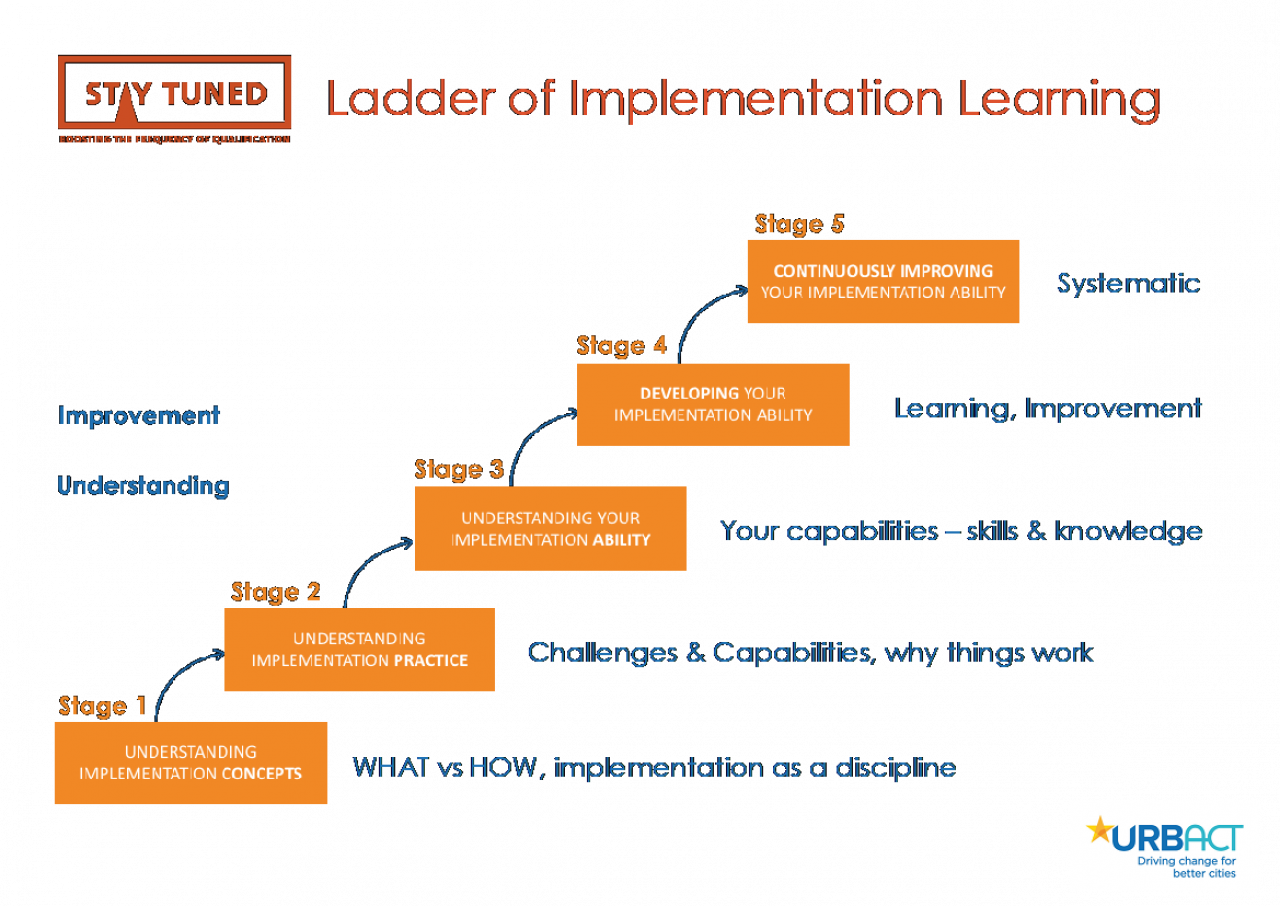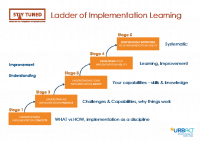
In the previous post (Talking About Doing) we looked at defining what we mean by implementation and introduced the idea of separating the concept of Implementation from the concept of Policy – looking at the HOW separately from the WHAT.
Having done that, we need to look at the process for learning and exchange in relation to implementation…
Implementation as a Discipline
The Implementation Networks were born out of a simple question:
“why don’t action plans get implemented as well as they should?”
The follow-ups to this are typically, “we know what we should be doing, but why doesn’t it happen?” or “why doesn’t it have the results we hoped for?”
There are many aspects to this, many of which are linked to how city practitioners (and people more generally) approach things. Cities are complex social systems and we still do not fully understand how best to tackle the modern, complex problems which we face within them.
But a big part of answering that (seemingly simple) question lies in the fact that we generally don’t recognise implementation as a “thing”, as a discipline in its own right. We often see it as a process within our work, something that we “just do”. This is as much about municipality focus and structures as it is about individual understanding and it varies between cities and institutions and also (in a more general way) between different countries.
But the fact remains that many of us do not readily latch onto the concept of learning about implementation. We don’t see it as a distinct practice, as a set of skills, as a set of capabilities that we can learn to apply in many different situations. We see it as just part of what we do within our field.
As with anything, until we recognise it and understand what it is, it will be difficult to deliberately improve upon.
The Ladder of Implementation Learning
For the Stay Tuned network, we devised a simple 5 stage model to illustrate the conceptual thinking steps needed to move towards deliberately working on improving our implementation capabilities. The aim of the model was simply to reinforce the need for considering the different aspects of implementation practice - in terms of what that means to you and an individual, as a team, as a department, as a ULG, as a municipality etc.
This builds on the idea that to learn about implementation, we first need to understand what it is in detail – the concepts and the practical capabilities involved. Then we can look at which of these we need to develop and then actively work on improving those areas.
The Five Stages of Implementation Learning
To further explain the difference in approaches and set out the stages we need to go through to improve our Implementation practice we used the following framework. It is designed to help individuals and cities understand their current position with regard to implementation. It is best used as a sense-making framework to help understand a specific (local) situation. This provides indications about the differences between the local actors and informs which steps might be needed next, helping decide how to approach things. It is an aid to understanding the overall journey and the local progress along that general path.

There are five stages to the learning process, as we move through understanding of Implementation into making improvements in the way in which we “do” implementation. These are described as follows:
Stage 1) UNDERSTANDING IMPLEMENTATION CONCEPTS
Grasping the conceptual part and understanding that thinking about Implementation is essentially different to thinking about Policy: about the difference between the WHAT and the HOW and that there are specific types of challenges faced during implementation. Appreciate that we can consider them both as distinct disciplines in their own right, requiring different approaches, skills and mindset. (this is what we talked about at the beginning of this post).
Stage 2) UNDERSTANDING IMPLEMENTATION PRACTICE
Breaking down the HOW into meaningful chunks, so we understand the challenges that are faced and the different aspects of HOW things are successfully implemented (i.e. the approaches and capabilities used and what they mean, what they consist of, how they work or are applied). For Stay Tuned, we devised a set of Implementation Themes, each with its own set of capabilities. Possessing or improving capability in these areas improves our ability to implement actions successfully.
Stage 3) UNDERSTANDING YOUR IMPLEMENTATION ABILITY
Assessing ourselves and how well we perform in terms of the capabilities needed for implementation (i.e. how we rate against the competencies, the skills, knowledge, methods, experience required.)
Building a picture of our skills and abilities so we understand our strengths and our gaps, where we need to develop our capabilities.
Stage 4) DEVELOPING YOUR IMPLEMENTATION ABILITY
Building on the Implementation Themes where our capabilities are strong – securing and systematising the practice. Developing our capabilities for areas where we’re less strong – acquiring and embedding new skills & methods.
Stage 5) CONTINUOUSLY IMPROVING YOUR IMPLEMENTATION ABILITY
Establishing systematic learning loops and processes to constantly challenge current practice and improve the way in which we implement projects on a local/city level. A deliberate and structured approach to make sure we continuously learn and improve our practice.
Note that there are various activities to help us reach each stage but we have avoided calling the five parts of the ladder “steps” (as the ‘ladder’ metaphor perhaps demands) because in practice, they are not a set of sequential actions. One would expect a general progress up the stages over time, but learning or activity at a higher stage might also help us to understand a previous stage better. It’s therefore best to use the stages not a series of steps, but to assess where we are and help us think about what to do next.
Using the Ladder in Practice
By combining the Ladder with an understanding of the Capabilities that exist and with a structured way to asses ourselves against these capabilities, we can begin to understand our current situations better and therefore target our focus and development.
This is precisely what we did in Stay Tuned, by first developing a set of “Implementation Themes” (each of which was comprised of a number of “Implementation Capabilities”) and then by creating a basic Self-Assessment process and template for partners to use in their local teams or groups to think about strengths and development areas.
Again, we did this to assess where we were and to help think about what to do next. This helped city teams to identify which capabilities would be important to them in their implementation, which they were strong at, and therefore which capabilities might need more attention or development if they were going to be successful.
The approach doesn’t instantly make us better at implementing policies and action plans. But it does help us to focus our efforts, so we can more deliberately improve our capability in the areas that will make the most difference to our implementation journeys.
In the next post (Old Dogs, New Tricks) we’ll look at the difference between individual learning and whole-organisation learning.
Ian Graham
Lead Expert, Stay Tuned
